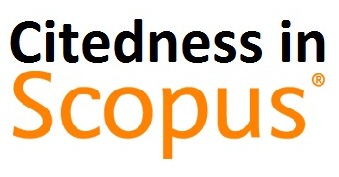Prediction of Education Level in Population Data Using Naïve Bayes Algorithm
DOI:
https://doi.org/10.38043/tiers.v3i2.3865Keywords:
Prediction, Education, Naive Bayes, AlgorithmAbstract
Education is the key to improving human resources. The Ministry of National Education is implementing a curriculum that requires students to study it (MoNE) and as part of this program, all Indonesian citizens are required to attend three years of primary education, which includes SD, MI/Equivalent, three years for SMP/Equivalent, and three years for high school/equivalent level. This study aims to determine whether or not a government program that requires Indonesian citizens to study for 12 years is required, therefore it is necessary to test predictions of data on the level of education in Blitar Regency. This study conducted a prediction test by implementing the Naive Bayes algorithm on education-level data in Blitar Regency as of 2020 which was taken from the satudata.go.id website. In the data processing, there are values of precision, recall, f-measure, Weighted Avg, and also Confusion Matrix. The accuracy results of the Naive Bayes Algorithm on education level data in Blitar district show that the district has implemented government policies regarding the 12-year compulsory education program, this is based on the results of data processing which shows an accuracy value of 98.4848% and category good classification.
Downloads
References
E. Risdianto, “Analisis Pendidikan Indonesia di Era Revolusi Industri 4.0,” Res. Gate, no. April, pp. 0–16, 2019.
I. A. Nafrin and H. Hudaidah, “Perkembangan Pendidikan Indonesia di Masa Pandemi Covid-19,” Edukatif J. Ilmu Pendidik., vol. 3, no. 2, pp. 456–462, 2021.
I. W. C. Sujana, “Fungsi Dan Tujuan Pendidikan Indonesia,” Adi Widya J. Pendidik. Dasar, vol. 4, no. 1, p. 29, 2019.
I. A. Sugardha, “Upaya Ke Arah Wajib Belajar 12 Tahun Di Kabupaten Majalengka; Pendekatan Kebijakan,” J. Adm. Pendidik., vol. 25, no. 2, pp. 252–263, 2018.
S. Hidayatul, A. Aini, Y. A. Sari, and A. Arwan, “Seleksi Fitur Information Gain untuk Klasifikasi Penyakit Jantung Menggunakan Kombinasi Metode K-Nearest Neighbor dan Naïve Bayes,” vol. 2, no. 9, pp. 2546–2554, 2018.
H. Annur, “Klasifikasi Masyarakat Miskin Menggunakan Metode Naive Bayes,” Ilk. J. Ilm., vol. 10, no. 2, pp. 160–165, 2018.
P. Subarkah, A. N. Ikhsan, and A. Setyanto, “The effect of the number of attributes on the selection of study program using classification and regression trees algorithms,” in Proceedings - 2018 3rd International Conference on Information Technology, Information Systems and Electrical Engineering, ICITISEE 2018, 2018.
S. Eka et al., “Penerapan Model Naive Bayes Untuk Memprediksi Potensi,” vol. 1, no. 1, pp. 82–87, 2021.
I. Loelianto, H. Angriani, B. Mappakasunggu, and K. Makassar, “IMPLEMENTASI TEORI NAÏVE BAYES DALAM KLASIFIKASI CALON,” vol. 3, no. 2, pp. 110–117, 2020.
A. R. Isnain, N. S. Marga, and D. Alita, “Sentiment Analysis Of Government Policy On Corona Case Using Naive Bayes Algorithm,” IJCCS (Indonesian J. Comput. Cybern. Syst., vol. 15, no. 1, p. 55, 2021.
M. Idris, “Implementasi Data Mining Dengan Algoritma Naive Bayes Untuk Memprediksi Angka Kelahiran,” J. Pelita Inform., vol. 7, no. 3, pp. 421–428, 2019.
M. S. Nawaz, B. Shoaib, and M. A. Ashraf, “Intelligent Cardiovascular Disease Prediction Empowered with Gradient Descent Optimization,” Heliyon, vol. 7, no. 5, p. e06948, May 2021.
A. Khan et al., “PackerRobo: Model-based robot vision self supervised learning in CART,” Alexandria Eng. J., vol. 61, no. 12, pp. 12549–12566, 2022.
M. Han, J., & Kamber, Data Mining Concepts, Model and Techniques 2nd Edition. San Fransisco: Elsevier, 2006.
J. Han, M. Kamber, and J. Pei, Data Mining Concepts and Techniques 3rd Edition. San Fransisco: Morgan Kauffman, 2012.
D. P. Utomo and M. Mesran, “Analisis Komparasi Metode Klasifikasi Data Mining dan Reduksi Atribut Pada Data Set Penyakit Jantung,” J. Media Inform. Budidarma, vol. 4, no. 2, p. 437, 2020.
A. Nurfauzan and W. Maharani, “Klasifikasi Emosi Pada Pengguna Twitter Menggunakan Metode Klasifikasi Decision Tree,” 2021.
F. Gorunescu, Data mining Concepts, Models and Techniques. Verlen Berlin: Springer, 2011.
I. Parlina et al., “Naive Bayes Algorithm Analysis to Determine the Percentage Level of visitors the Most Dominant Zoo Visit by Age Category,” J. Phys. Conf. Ser., vol. 1255, no. 1, 2019.
W. Chen, S. Zhang, R. Li, and H. Shahabi, “Performance evaluation of the GIS-based data mining techniques of best-first decision tree, random forest, and naïve Bayes tree for landslide susceptibility modeling,” Sci. Total Environ., vol. 644, pp. 1006–1018, 2018.
P. Subarkah, W. Risma, and R. Aditya, “Comparison of correlated algorithm accuracy Naive Bayes Classifier and Naive Bayes Classifier for heart failure classification,” vol. 14, no. 2, pp. 120–125, 2022.
G. Bermejo-Martín et al., “Accurate detection of Covid-19 patients based on Feature Correlated Naïve Bayes (FCNB) classification strategy,” IEEE Access, vol. 9, no. 1, p. 121, 2021.
Downloads
Published
How to Cite
Issue
Section
License
Copyright (c) 2022 Pungkas Subarkah

This work is licensed under a Creative Commons Attribution-ShareAlike 4.0 International License.





















